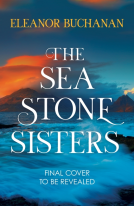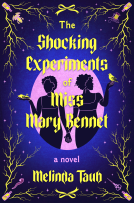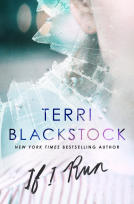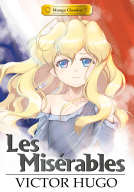
A Decade of French Fashion, 1929-1938
From the Depression to the Brink of War
by Mary Carolyn Waldrep
This title was previously available on NetGalley and is now archived.
Send NetGalley books directly to your Kindle or Kindle app
1
To read on a Kindle or Kindle app, please add kindle@netgalley.com as an approved email address to receive files in your Amazon account. Click here for step-by-step instructions.
2
Also find your Kindle email address within your Amazon account, and enter it here.
Pub Date Aug 19 2015 | Archive Date Aug 13 2015
Description
These selections from full-color French catalogs produced for the international market from 1929 through 1938 document the changes in fashion from the time of the stock market crash to the dawn of World War II. More than 100 images of day and evening wear illustrate the movement from flapper fashions to a more austere look. Fashion designers, costume historians, costumers, and anyone who loves fashion will treasure this richly illustrated survey.
Available Editions
| EDITION | Paperback |
| ISBN | 9780486797830 |
| PRICE | $19.95 (USD) |
Average rating from 34 members
Featured Reviews
 Kimberly S, Librarian
Kimberly S, Librarian
This book is wonderful fun for designers, history buffs--perhaps even writers who want to make their Depression-era settings more accurate and rich. Costumers will also want this in their library.
 Paula D, Reviewer
Paula D, Reviewer
This is a lovely and fascinating book for any student of fashion. I have always been intrigued by the fashions of "Paris between the Wars" and this book is an exemplary example of what life could have been like, at least for the upper class.
The plates in the book have been reproduced with care and are very clear. It is an inspirational book for fiber and fashion artists (I knit and have had my creativity jiggled by this book). This book is an excellent reference and resource for any person or group dealing with fashion, design, etc.
A great read!
 Tricia B, Reviewer
Tricia B, Reviewer
I loved this book!
Great to add to my arsenal of fashion history books!
 Caitie C, Bookseller
Caitie C, Bookseller
nicely done.
Published review will come out two weeks pre-release date.... @ cowgirl caities blogspot Also facebook, twitter, pinterest and goodreads review
 Angela H, Librarian
Angela H, Librarian
Beautiful collection of inspiring illustrations. The illustrations here are detailed enough to allow an inexperienced sewer to find similar patterns or allow an experienced sewer to create their own. This would be perfect for a reference book to get the crafting juices flowing.
The 1930s are still a very unexplored decade for fashion; while movies, pop culture, and TV shows brought attention to their era's styles (e.g, Titanic gave us pre WW1/Edwardian, Downton Abbey and Great Gatsby the 1920s, Rockabilly the 1940s/1950s, Mad Men the 1960s, etc.), the 1930s has never had a tentpole to bring a resurgence of interest. As such, this very definitive book provides much needed perspective. It beautifully presents the looks that women wore during the US's Great Depression: long, lean, tailored but easy, wider shoulders and emphasized waistlines. It's the glamour of Hollywood before Austerity and World War II led to a greater severity out of necessity.
There are many books on fashion eras and certainly Dover has been in the forefront of publishing the best. This particular volume collects fashion plates which were disseminated to the world by French publishers from 1929 to 1939. What makes this series of plates especially interesting is that they are in full glorious color, had front and back views, and descriptions of the changing styles were given for each look. Those details are useful for understanding how the fashion evolved over the years and what each year brought in minor changes.
The presentation of the plates are s full page on white with a small border and the year printed at the bottom. It makes for a clean and lovely display - uncluttered and large. A typical description of a fashion by the French publisher is: "Two piece frock of line jersey with rich diagonal tucked trimming. Flat collar. Sweater buttons all the way down. Slightly flared skirt." Accessories are displayed for each look (from gloves to fur), and there is a line drawing of the back of each fashion.
The plates are diverse - from evening gowns to day suits, afternoon dresses, to coats. Owing to the era, the drawings are fairly elongated and figures are not to scale (legs are much longer than head/torso). Most plates have one style but some have 2-3 similar looks (or e.g., one dress and then coat/hat options). The shoes have no details and are generic/not discussed. Some plates even have a small drawing of the sewing pattern and how the pieces are laid out on the fabric.
Because of the huge diversity and sheer amount of fashions beautifully presented in full color, this is definitely a 'must have' for fashion historians, costumers, seamstresses, and those interested in the era. I've owned many Dover fashion books over the past 3 decades and this is definitely one of the best. Reviewed from an advance reader copy provided by the publisher.
 Reviewer 269869
Reviewer 269869
A Decade of French Fashion, 1929-1938 by Mary Carolyn Waldrep features color fashion plates depicting the changing styles of fashion. Her book covers fashion from the Depression to the beginning of World War II. Thanks to the illustrations you will see both evening and day dresses that were the height of fashion. You will also see how the Depression caused dresses to go from the jazzy flapper styles to the more conservative styles during the Depression.
If you love fashion history, you’ll love this book.
Recommend.
 Lisa S, Reviewer
Lisa S, Reviewer
Kashamoussa, cashmere, georgette, velvet, taffeta. The very names of the materials of these materials evoke a decade of glamour and luxury, even though it was the Depression era! These beautiful gowns and dresses accompanied by excellent descriptions will appeal to everyone interested in the history of fashion. It's also likely to inspire fashion illustrators and designers.
This is certainly a must-buy!
I received this free ebook from Net Galley in return for an honest review.
 Reviewer 60249
Reviewer 60249
A well-illustrated survey of style. Chock full of detailed, quality illustrations accompanied by brief descriptions. A worthy offering, nostalgic types who enjoy perusing vintage catalogs and clip art books will find much to savor here. This practical resource is sure to provide inspiration for artists and fashion designers. Five stars.
A DECADE OF FRENCH FASHION, 1929-1938: FROM THE DEPRESSION TO THE BRINK OF WAR Written by Mary Carolyn Waldrep 2015, 112 Pages Genre: art, fashion, nonfiction
(I received an ARC from the NETGALLEY in exchange for an honest review.)
★★★★
I have been a fan of Dover books since I discovered them back in 2002 at the book store I worked in. You could purchase classics for under $2.00 or get your hands on older books being reissued. I am so happy they are also producing eBooks and are available at eLibraries (like Freading).
I requested this copy of French Fashions because I love looking at what people were wearing during different eras. It brings them to mind when I read books from that era. I enjoyed this book because it looked like sketches you would have seen in catalogs of the day. I would recommend this book to anyone wanting the history of fashion between 1929-1938 in France or ideas for costumes.
Readers who liked this book also liked:
Created by Hayao Miyazaki
Comics, Graphic Novels, Manga
Melinda Taub
General Fiction (Adult), New Adult, Sci Fi & Fantasy


















